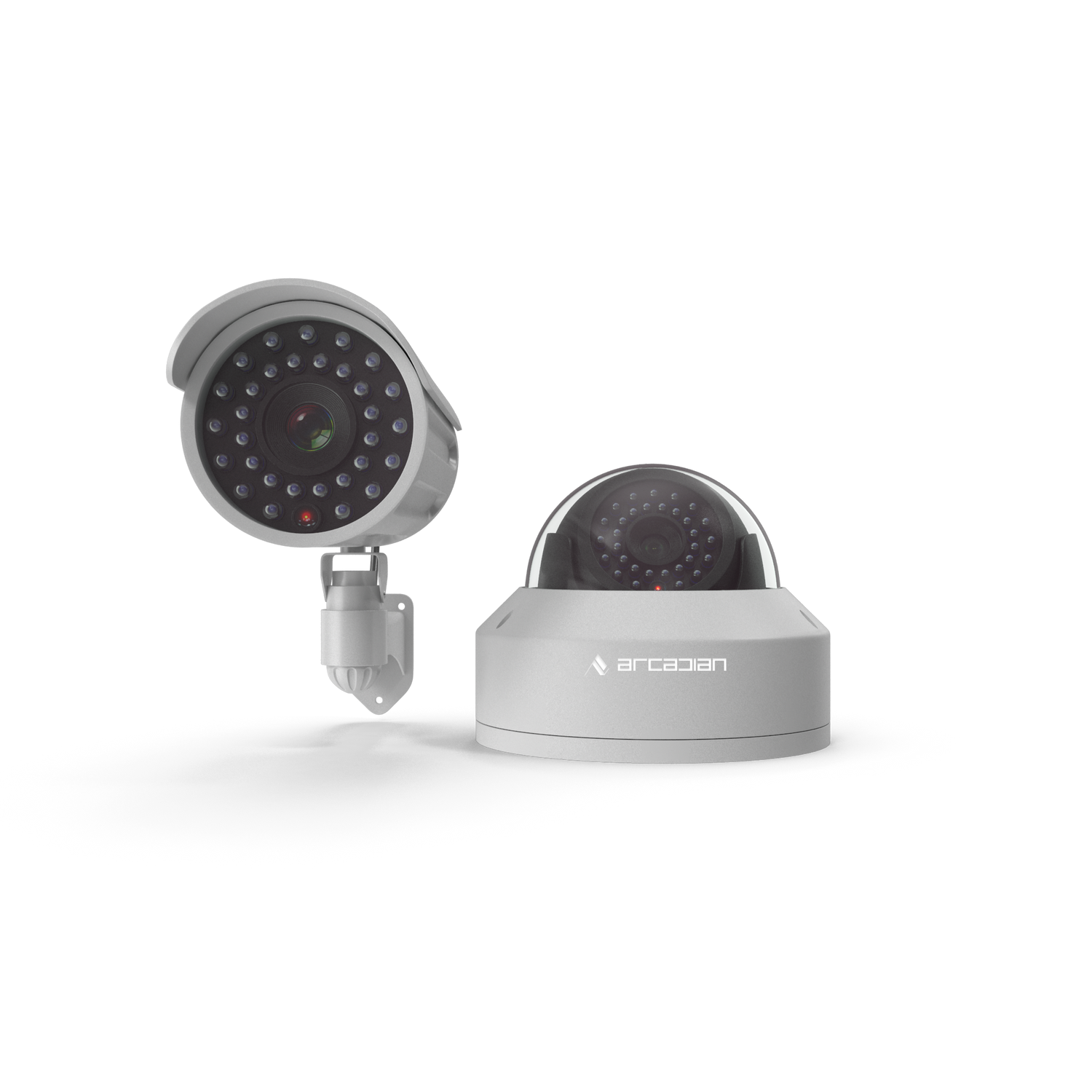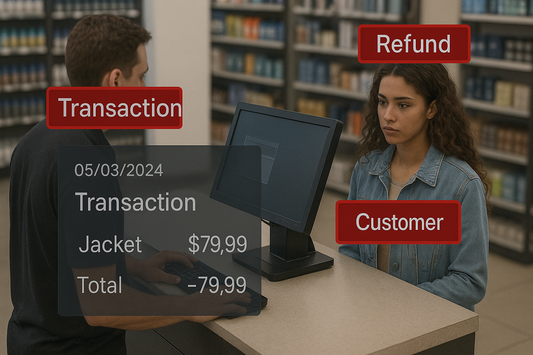The Risks of Sticking with Legacy NVR/DVR Systems in a Digital World
As technology advances and security threats become more sophisticated, many organizations still rely on legacy NVR (Network Video Recorder) and DVR (Digital Video Recorder) systems to safeguard their premises. While these systems have been a reliable solution for recording and storing video footage in the past, they are quickly becoming...

As technology advances and security threats become more sophisticated, many organizations still rely on legacy NVR (Network Video Recorder) and DVR (Digital Video Recorder) systems to safeguard their premises. While these systems have been a reliable solution for recording and storing video footage in the past, they are quickly becoming outdated in today’s fast-paced, digital world.
Sticking with these older systems can expose businesses to several risks, from data vulnerabilities to scalability limitations. In this blog post, we’ll explore the dangers of relying on legacy NVR/DVR systems and discuss why upgrading to more modern, cloud-based, or AI-powered solutions is critical to maintaining effective security in the digital age.
1. Limited Scalability and Flexibility
Legacy NVR/DVR Limitation: Traditional NVR/DVR systems are hardware-dependent, which means their scalability is limited by the number of cameras, storage capacity, and infrastructure. As businesses grow and security needs expand, these systems require costly hardware upgrades, additional wiring, and significant investments in new equipment.
- Expensive Upgrades: Expanding coverage requires purchasing additional recorders and storage devices, making it difficult and costly to scale up quickly.
- Inflexible Infrastructure: These systems lack the flexibility to adapt to changing security requirements, such as adding new cameras or integrating advanced analytics without overhauling the entire setup.
Risk: Businesses that rely on legacy systems may find themselves unable to scale their surveillance capabilities efficiently, leaving blind spots in their security coverage and increasing the risk of undetected incidents.
2. Security Vulnerabilities and Data Risks
Legacy NVR/DVR Limitation: Legacy NVR/DVR systems typically store video footage on physical hard drives located on-site. This local storage approach leaves businesses vulnerable to data loss, tampering, and cyberattacks.
- Physical Security Risks: If the recording device is stolen, damaged, or tampered with, all stored footage can be lost, compromising security investigations.
- Lack of Data Encryption: Many older systems do not use advanced encryption protocols, leaving video data vulnerable to interception and unauthorized access.
- Cybersecurity Gaps: Legacy systems are often not equipped to handle modern cybersecurity threats, making them easy targets for hackers looking to disrupt operations or steal sensitive footage.
Risk: Relying on outdated systems exposes organizations to data breaches, theft, and the loss of critical footage, putting both business assets and people at risk.
3. Poor Video Quality and Limited Analytics
Legacy NVR/DVR Limitation: Older NVR/DVR systems were designed to handle lower-resolution cameras, which often results in poor video quality. This limitation can make it difficult to identify important details like faces, license plates, or suspicious activities in the footage.
- Low-Resolution Footage: Most legacy systems capture video in standard definition, making it challenging to gather clear evidence in security incidents.
- Lack of Video Analytics: Legacy systems lack advanced video analytics capabilities, such as facial recognition, object detection, or behavioral analysis, reducing the system’s ability to proactively identify threats.
Risk: In today’s security landscape, where high-resolution cameras and real-time analytics are essential, relying on low-quality footage can hinder investigations, delay responses, and miss critical security threats.
4. High Maintenance and Operational Costs
Legacy NVR/DVR Limitation: Maintaining legacy NVR/DVR systems can be costly and time-consuming, especially as the hardware ages. Components such as hard drives, power supplies, and cooling systems need frequent maintenance, replacements, or upgrades to keep the system functional.
- Frequent Hardware Failures: Older systems are more prone to hardware failures, requiring constant maintenance and replacement parts.
- Energy Consumption: Legacy systems often consume more energy, especially when supporting multiple cameras or high-resolution footage, leading to higher operational costs.
Risk: Businesses may face increased operational costs due to constant repairs, higher energy consumption, and the need for frequent hardware replacements, ultimately making legacy systems more expensive to maintain over time.
5. Limited Remote Access and Monitoring
Legacy NVR/DVR Limitation: While many modern surveillance systems offer cloud-based access, enabling security personnel to monitor video feeds from anywhere, legacy NVR/DVR systems often lack robust remote access features. Remote monitoring on older systems typically requires complex network configurations, such as port forwarding, and often comes with limited functionality.
- Difficult Setup: Setting up remote access for legacy systems is complicated, and maintaining secure connections can be a challenge.
- Limited Functionality: Even when remote access is available, features are often basic, allowing only live viewing rather than full control over settings, search functions, or event notifications.
Risk: Without reliable remote monitoring, businesses cannot effectively respond to incidents in real-time, especially if security personnel are off-site or managing multiple locations.
6. Inability to Integrate with Modern Technology
Legacy NVR/DVR Limitation: As security technology evolves, modern systems often integrate with other smart devices and sensors to provide comprehensive surveillance coverage. Unfortunately, legacy NVR/DVR systems are not designed to interface with these advanced technologies.
- No IoT Integration: Legacy systems cannot easily connect to Internet of Things (IoT) devices, such as access control systems, motion detectors, or environmental sensors.
- Limited AI and Machine Learning Capabilities: Older systems do not support the integration of AI or machine learning, meaning they cannot benefit from advanced features like real-time video analytics, predictive analytics, or automated threat detection.
Risk: Failing to integrate with modern security technologies leaves businesses with siloed systems that cannot communicate or share data, reducing the overall effectiveness of their security strategy.
7. Difficulty in Meeting Compliance and Privacy Regulations
Legacy NVR/DVR Limitation: As data protection and privacy laws continue to evolve, many organizations are required to adhere to strict regulations regarding the storage, handling, and protection of video footage. Legacy systems often lack the tools necessary to ensure compliance with these regulations.
- Lack of Data Retention Management: Legacy systems may not offer the ability to automatically manage data retention policies, resulting in either excess storage of unnecessary footage or the accidental deletion of important video.
- No Audit Trail: Older systems often lack the capability to provide audit trails, making it difficult to demonstrate compliance with data privacy regulations.
Risk: Organizations that fail to comply with data protection laws risk facing heavy fines, legal repercussions, and damage to their reputation.
8. Inadequate Future-Proofing
Legacy NVR/DVR Limitation: Legacy systems are built on older technology that is not designed to accommodate future advancements in video surveillance, AI, or cloud-based services. This lack of future-proofing means that as new innovations emerge, businesses relying on legacy systems will struggle to keep pace.
- Outdated Infrastructure: Legacy systems cannot easily integrate with the latest technologies, making it difficult for businesses to adopt new innovations without completely overhauling their security systems.
- Stagnant Feature Set: As technology advances, the feature set of legacy systems remains stagnant, preventing businesses from accessing new, potentially game-changing security capabilities.
Risk: Sticking with outdated technology can leave businesses vulnerable to emerging security threats and hinder their ability to take advantage of future advancements in surveillance technology.
Why Upgrading to Modern Surveillance Solutions Is Essential
In a digital world where security threats are becoming more complex and advanced, relying on legacy NVR/DVR systems can put businesses at risk. Modern surveillance solutions—especially those leveraging AI, cloud technology, and real-time analytics—offer significant advantages that overcome the limitations of older systems. These include:
- Scalability and flexibility to adapt to growing security needs.
- Advanced video analytics for real-time threat detection.
- Cloud-based storage for enhanced data security and remote access.
- Seamless integration with IoT devices and AI-driven technology.
- Lower operational costs and more efficient maintenance.
Conclusion
Sticking with legacy NVR/DVR systems in today’s digital world presents significant risks to businesses, including data vulnerabilities, high operational costs, and an inability to scale or integrate with modern technology. To ensure long-term security, compliance, and operational efficiency, it’s critical to upgrade to modern, AI-powered, or cloud-based surveillance solutions that can meet the demands of the digital age.
Experience the Power of Arcadian.ai for Free
Enhance your security with the latest in AI-driven technology! Sign up for free today and explore Arcadian.ai's advanced remote surveillance solutions with a free trial. Start as a guest user and discover how Arcadian.ai can transform your security operations, improve efficiency, and offer real-time protection—without any commitment.
Get started now with your free trial and unlock the full potential of smarter security solutions with Arcadian.ai!
- Risks of legacy NVR/DVR systems
- Legacy security systems vs. modern solutions
- Benefits of upgrading NVR/DVR systems
- Cloud-based surveillance advantages
- AI-powered video surveillance
- Legacy system limitations in security
- NVR/DVR data vulnerabilities
- Scalability issues in legacy systems
- Remote access in modern surveillance
- AI video analytics for security

Security is like insurance—until you need it, you don’t think about it.
But when something goes wrong? Break-ins, theft, liability claims—suddenly, it’s all you think about.
ArcadianAI upgrades your security to the AI era—no new hardware, no sky-high costs, just smart protection that works.
→ Stop security incidents before they happen
→ Cut security costs without cutting corners
→ Run your business without the worry
Because the best security isn’t reactive—it’s proactive.







